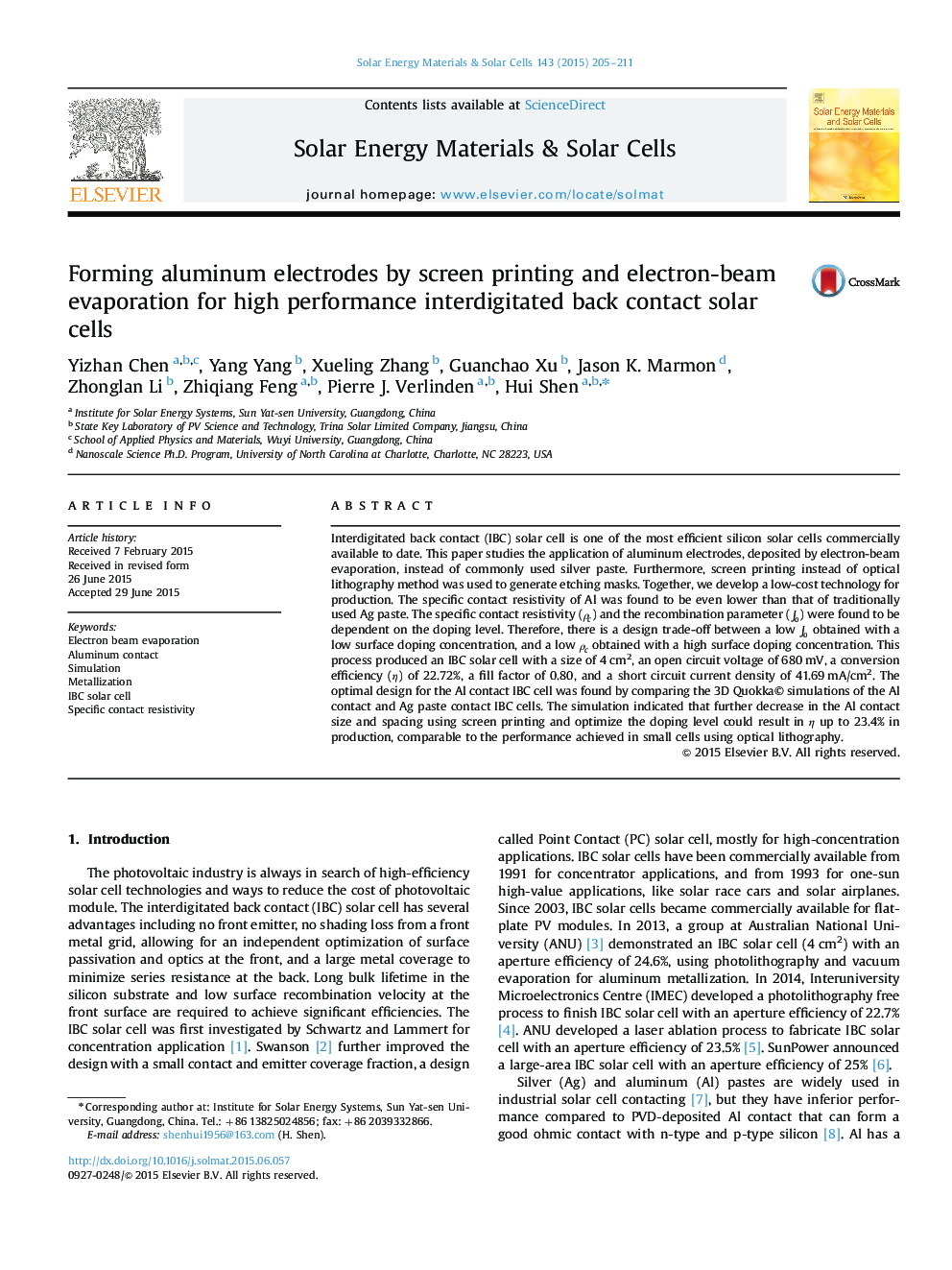| Article ID | Journal | Published Year | Pages | File Type |
|---|---|---|---|---|
| 6535044 | Solar Energy Materials and Solar Cells | 2015 | 7 Pages |
Abstract
Interdigitated back contact (IBC) solar cell is one of the most efficient silicon solar cells commercially available to date. This paper studies the application of aluminum electrodes, deposited by electron-beam evaporation, instead of commonly used silver paste. Furthermore, screen printing instead of optical lithography method was used to generate etching masks. Together, we develop a low-cost technology for production. The specific contact resistivity of Al was found to be even lower than that of traditionally used Ag paste. The specific contact resistivity (Ïc) and the recombination parameter (Jo) were found to be dependent on the doping level. Therefore, there is a design trade-off between a low Jo obtained with a low surface doping concentration, and a low Ïc obtained with a high surface doping concentration. This process produced an IBC solar cell with a size of 4 cm2, an open circuit voltage of 680 mV, a conversion efficiency (η) of 22.72%, a fill factor of 0.80, and a short circuit current density of 41.69 mA/cm2. The optimal design for the Al contact IBC cell was found by comparing the 3D Quokka© simulations of the Al contact and Ag paste contact IBC cells. The simulation indicated that further decrease in the Al contact size and spacing using screen printing and optimize the doping level could result in η up to 23.4% in production, comparable to the performance achieved in small cells using optical lithography.
Related Topics
Physical Sciences and Engineering
Chemical Engineering
Catalysis
Authors
Yizhan Chen, Yang Yang, Xueling Zhang, Guanchao Xu, Jason K. Marmon, Zhonglan Li, Zhiqiang Feng, Pierre J. Verlinden, Hui Shen,
